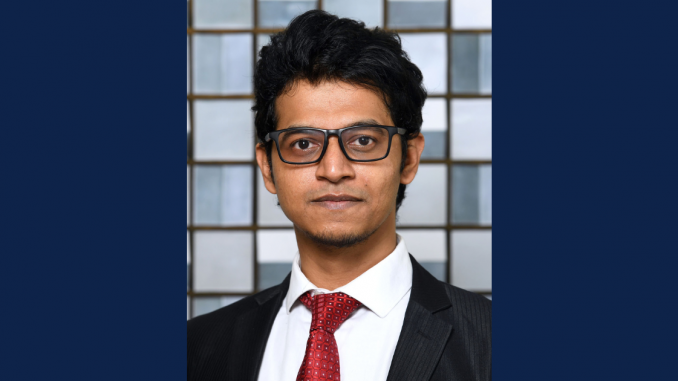
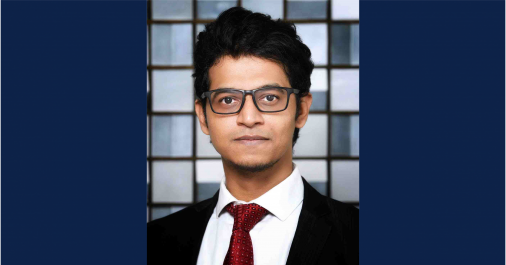
Selamat Pagi! – greetings in Bahasa Indonesia. My name is Anurag Kumar and I recently graduated from the ESMT Berlin Full-time MBA (FTMBA) program.
I am a (PSM) Scrum-certified agile project manager with more than six years of experience in e-commerce, fintech and healthcare in strategy, product and project management.
Joining the FTMBA was one of the most rational and radical decisions of my life. After championing admission into three elite B-schools in Europe, I chose ESMT based on two factors, professional and personal.
On the professional front, ESMT’s FTMBA program is comprised of a small cohort with an international faculty, resulting in an apt class-to-teacher ratio; a diverse, intelligent, and amazingly insane community of 50 international students; a competitive, yet collaborative environment; a strong sense of community; a 14-month full-time program with a sustainable/ethical/entrepreneurial business focus; and an innovative curriculum.
On the personal front, I aspired to not only expand the domain of my skills, knowledge, and acumen but sharpen the arsenal of existing ones with an ingrained focus on an agile mindset, holistic growth, global exposure, and business learning in advanced management science.
The Responsible Leaders Fellowship (RLF)
In line with those two deciding factors, the Responsible Leaders Fellowship (RLF) was one of the main reasons I chose ESMT for my MBA. My professional experience includes both corporate and start-up experience in various B2B and B2C industries, but I had limited experience in creating a long-term social impact. As a result, I aspired to not only hone my skills but also broaden the domain of my business acumen and technical competencies by introducing constraints and limitations that I never encountered before.
Furthermore, I believe that once I enter the corporate world, I may not have another opportunity to build strategies and implement them for welfare programs. Through this fellowship, I aspired to conduct experiential learning: I was challenged and inspired in unexpected ways by the term: frugality – one of the key leadership principles of Amazon – that focuses on making the best out of limited constraints.
The Indika Foundation and Toleransi.id (TID)
Toleransi.id (TID), a social sub-stratum of the Indika Foundation based in Indonesia, governs 3 sub-programs – Jelajah Toleransi, Narasi Toleransi, and AskMeAnything, to enhance and optimally engage socially active youths for creating awareness, acceptance, actions, and tolerance through narrative content.
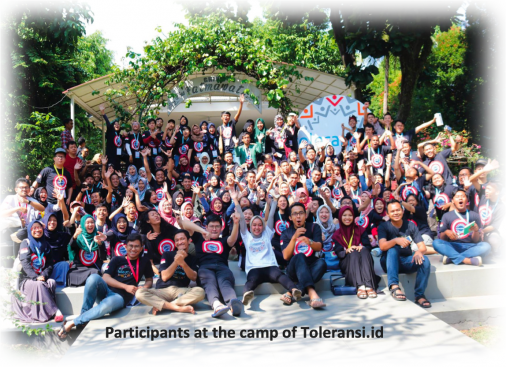
Since 2018, TID has been part of the Indika Foundation but is limited by the foundation and its impact on core projects. As of April 2022, TID’s objectives and target audience are more apparent, so it was the right time for me to interact through innovation, elevate the social currency (SROI), and structure the program so that it is both process and target oriented towards competitiveness, modularization, and sustainability.
My goals
I decided on three major goals for this journey of a lifetime – sustainability, scalable impact, and contribution to society.
The RLF provided me with the opportunity to give back to society and make a lasting impact by working with an organization on a pro-bono basis in a developing economy that needed my services.
I expected to function on both strategic and execution levels with a blend of autonomy and accountability in Indonesia. I also intended to emulate the transferable skills by working in constraints of fragmented, frugal, and siloed formations. The goal was to grow both personally and professionally with a human-centric approach.
Highlights and challenges of the project
To say that the initial weeks were difficult would be an understatement since I was limited by the clarity of responsibility. I began interactions with the program and division leads on program objectives and goals for the future; however, I hit a speedbump with the answers to the next steps because the majority of the insights were fragmented and siloed with fewer and notable direct members of the foundation.
To streamline the process, I arranged 3 meetings every week with program leads to get a head start, delve deeper, and identify the right point of contact. I engaged with the community to learn about the prevalent challenges such as language barriers, digital illiteracy, and prohibiting mismatches in purchasing power parity.
Living in rural areas of Indonesia was both challenging and interesting because of the strict lockdowns, frequent power cuts, and dampened tourism. I walked 13 km every day to run errands such as grocery shopping, going to the ATM, visiting warungs (small shops) etc., because services and delivery were limited. These challenges helped me to understand the hardships experienced by the local community.
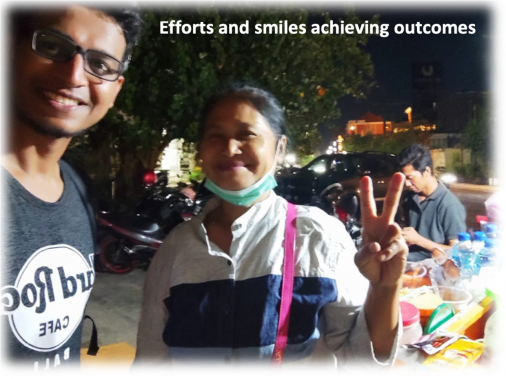
Engaging with the program leads, I implemented the value proposition canvas across all three of TID’s programs. To improve my execution, I collaborated with my ESMT MBA strategy professor, Henry Sauermann, to transform the canvas from a business to a social setting. This endeavor was a light-bulb moment, as it opened initiatives to connect, identify, and attack the central problem by balancing the interest of both stakeholders and volunteers in line with TID. I spent most of my time with program leads to understand the finer nuances of the problem statement and brainstormed for hours structuring the optimal solutions.
Putting my MBA skills into practice, I utilized my knowledge from the business lectures on corporate strategy, agile leadership, matchmakers in the digital economy, and design thinking.
Skilled with the strategic leadership track at ESMT, I demonstrated problem-solving abilities in product vision, project execution, and setting OKRs and roadmaps. I utilized learnings from entrepreneurial strategy as the base for the 30 intricately active sessions for program strategy and implementation with the Indika Foundation.
Evaluating the similar players with respect to scale, target audience, and allocated funding, I structured the USP of TID and identified pain, gain, and jobs to be done, utilizing the value proposition canvas, and devising the pain relievers, gain creators, and products and services.
Structuring the foundation of a social enterprise is not an easy endeavor, so I aimed at the fundamentals – I explored synergies between MBA learnings and social ventures. I explored the business model canvas and value proposition canvas to understand the social context and objective of the Indika Foundation. After learning the NGO’s objectives, I focused on enhancing the social return on investment (SROI) while balancing the needs of external and internal stakeholders.
Illuminated by the core problem statement, I led and structured the product roadmap to narrate and create insights for social content with a core focus on the outcome, online engagements, high SROI, and the mindset of tolerance.
The initiative was a 3-pronged approach –
- Minimize the cost structure from IDR 970 million to 700 million: reduction of 30%
- Enhance the revenue streams through donors (Indika Energy group), multilateral and corporate
- Exemplify the impact and measurements – High SROI
Outcomes
Aligning the internal and external stakeholders’ expectations, I re-engineered the processes by corroborating with the program director, M. Abie Zaidannas, and divisional leads Scholastica Gerintya Saraswati, Emilia Tiurma Savira, and Ayu Kartika Dewi, targeting 3 major outcomes:
- Simplified complex projects:
Help the team visually understand a project that may seem complex; show additional information about the various tasks or phases of the project
- Peripheral vision:
Quickly determine which tasks have dependencies, overlaps, and fit together. This kind of information allows project leaders to schedule work and provide resources in a way that does not impede the progress of a project
- Process automation:
Apply synergies of Gantt chart, stakeholder, and beneficiary roadmap
Implementing the strategy into action by amalgamating the audience journey, we invested time and energy for the reach and scale of engagements across social media platforms such as Facebook and Instagram, transforming assumptions into hypotheses and then eventually into actionable insights.
Collaborating with the design team of the Indika Foundation with Google Analytics and the trends in Indonesia, we were able to structure the communication plan – pre, during, and post-sessions.
We focused on articulating a tried-and-tested storytelling strategy to successfully increase engagement, reach and connect with the volunteers and stakeholders across the multitude of the program.
Key takeaways
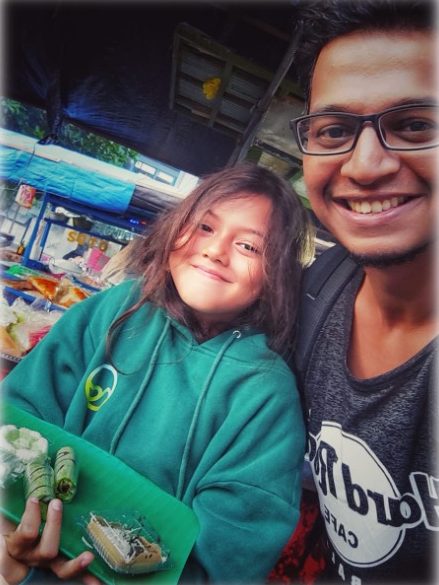
The RLF has been a blessing in disguise. My thought process, approach, and execution of problem statements, conflicts, and business solutions are better structured and detail-oriented. With this peripheral vision, I directly connect with macro and micro analysis of the tiniest of cogs that work in tandem and are responsible for the success of any organization. I can derive synergies in my current professional arc with the RLF and ESMT MBA teachings.
The majority of my recent interviews and case studies have revolved around the RLF experience, learnings, and challenges faced by the Indika Foundation. Working in a developing economy and new cultural setting, I gained invaluable experience and immersed myself beyond tourism, connecting with culture and people.
Over the past five months, the most important impact was enabling and empowering the Indika Foundation team with a sustainability focus and competitive advantage. I focused on streamlining the structure with products, people, and processes such that the initiatives could perform with minimal support and guidance, using Gantt charts, a centralized knowledge repository, and Miro boards.
Gratitude
I highly recommend students to be part of the ESMT RLF not only because of the breadth but also because of the depth of the learnings, exposure, and insights that are unparallel from any classroom experience.
Considering the fellow’s aspirations, the Indika Foundation has been a great platform for professional and personal growth with empathy and a lasting impact. The management team is extremely responsive and professional. I would like to give a special shout-out to Tya and Emilia for their support.

Furthermore, I have the highest regard for Nick Barniville for creating this amazing opportunity. ESMT’s leadership and program support have been outstanding throughout the fellowship, with a special mention to Agnes Horvath.
In addition to this incredible professional opportunity, I am now a globally certified professional AWD scuba diver. It’s been a life-changing five months!
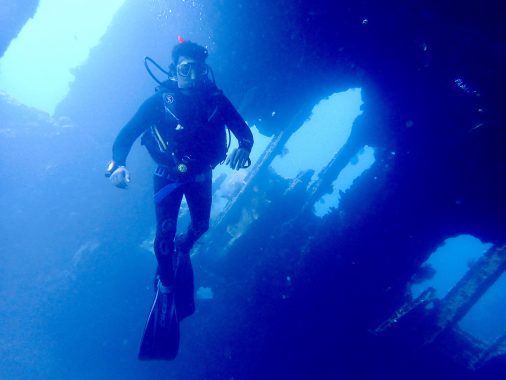
Dive under the USAT Liberty wreck – a US Army cargo ship torpedoed by Japanese submarine I-166 in January 1942 and beached on the island of Bali, Indonesia
During the fellowship, I have architected the program development for impact measurement, empowering innovation and sustainable projects through day-to-day program management and execution tasks. I would like to express my heartfelt gratitude to everyone who supports the RLF and makes these opportunities possible. I am also thankful for the fellowship with the Indika Foundation for being nominated for the Financial Times Business Education Awards 2023.
Terima kasih! – thank you in Bahasa Indonesia
